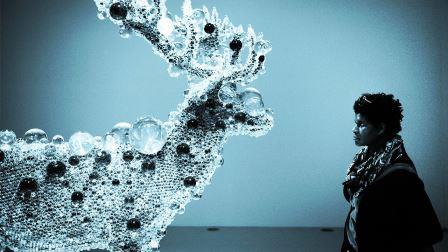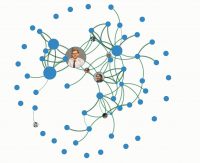Three Reasons Why Your Creative Work Needs An Audience
Most of us value creativity even if we do so for different reasons. Maybe you’re an entrepreneur trying to hit on your next big idea. Or maybe you’re somebody with a creative side hobby. So even while many of us are looking for our inner artist, only some think to ask themselves what’s the actual value of creativity in the marketplace—a question that isn’t always easy to answer.
The thing is, anyone who cares about being creative, for whatever reason, should probably be concerned with that issue. After all, it’s been around for along time. Put differently: Does art exist for art’s sake, or should our work always be meant for an audience? Is the goal to produce something that fits some sort of need or fulfills an outcome, or does that actually reduce an artwork’s quality? And where does marketing fit into all this?
These may be tricky questions, but they aren’t unanswerable. The creative impulse fundamentally involves connecting with other people, even if we don’t recognize it. The better we can understand why, the better work we’ll do—and the more of a difference it can make in others’ lives.
For years, I’ve been studying the lives of successful authors, artists, and creative people. What I’ve realized since diving into the world of entrepreneurship myself is that there are certain strengths creative people have that entrepreneurs need. Here are three of them.
1. Synthesis: To Create Is To Connect
The idea of “art for art’s sake” was a creed of the 20th century bohemians. On the surface, it sounds like a good idea. We shouldn’t create art that is functional or commercial, the argument goes, but rather pursue the creative act as an end in itself.
But what writer, designer, or musician wants their work to be ignored? What entrepreneur wants this? Even if you don’t see yourself as a business person at all, chances are you’d like to make a difference in the life of someone else, and the truth is that creation is the surest way to make that type of person-to-person connection.
The cartoonist Hugh MacLeod once illustrated what he saw as the difference between information and knowledge:
The pattern here is the same, but it takes connections to make it meaningful. We all long for that feeling when our work has resonated with at least one other person, and that’s what good creative work does. Any fool can make a point. The truly creative person makes a connection—and that connection leads to other creative interaction.
2. Collaboration: How Creative Communities Take Shape
These connections invariably lead to collaboration with other like-minded people—and this is something we don’t talk about nearly enough.
The idea of the lone artist slogging away at her craft in total isolation is a myth—it always has been. Even reclusive artists like Emily Dickinson communicated regularly with at least one other person. Most creative work, the scholar Michael Farrell has argued, happens as a result of collaboration. Most of history’s key scientific, artistic, and entrepreneurial breakthroughs can be credited to small groups that spurred each other on in their work—Farrell calls these “collaborative circles.”
Many collaborative circles, Farrell writes, are formed as an act of rebellion against the current status quo. In the 1850s, the French Impressionists banded together in solidarity against the narrow-minded bureaucracy of the Parisian salon. Collaborative circles often start small then gain in influence over time. A spirit of rebellion brought together a group of unusual painters who would forever change the way we look at art.
In the 1920s, Ernest Hemingway joined the likes of Ezra Pound, James Joyce, and Gertrude Stein, forming an avant-garde movement that would eventually be called “Modernism.” Ten years later, a couple of professors named C.S. Lewis and J.R.R. Tolkien began meeting weekly in Oxford to discuss literature with a handful of friends, refocusing on Romanticism in their own small act of defiance against the growing influence of Modernist literature. Creative work is always testing the boundaries of what’s come before, and rebellion is an important part of that process.
Not only does creativity lead inherently to connection and collaboration, it also involves competition. As they’re driven away from prevailing norms, creative people are forced together. And this is how markets get disrupted and world-shaking innovations happen—not in isolation but in solidarity, to compete against the status quo. As I wrote in my book The Art of Work, virtually every story of success is really a story of community.
3. Empathy: Finding An Audience For Your Art Takes Understanding
In 1872, the French novelist George Sand wrote that the artist has a “duty to find an adequate expression to convey it to as many souls as possible.” To put it more succinctly: Art needs an audience. A good artist serves her audience. A bad artist exploits it.
Living in Nashville, Tennessee, which is fast becoming both a more creative and more entrepreneurial city, I often hear other creatives scorning the pressure to market their work. They want to avoid appearing sleazy or “self-promotional.” But marketing and creativity are not enemies. They go hand in hand.
This can get tricky, though. There certainly is a line between healthy promotion and spammy marketing. So how do you know when you’ve crossed it?
People tend to evaluate their experiences of a product or service based on what’s expected, so creators first need to understand how they’re serving others’ needs. But we can’t stop there. Innovation begins with identifying people’s expectations and ends with exceeding them.
Steve Jobs famously quipped that people don’t know what they want until you show it to them. That’s the voice of an artist talking. Creative people have a sensitivity for what people need even before they realize it, and this isn’t pandering—it’s empathizing. A good artist serves her audience precisely because she’s so concerned about how her work will be received. A bad artist is too lazy or greedy to worry much about that and instead exploits whatever attention he can get. In other words, it pays to be sensitive.
The Best Time To Be Creative
With access to tools and technology we’ve never had before, now is truly the best time to be creative. It’s also the best time for companies and organizations to take full advantage of creativity—as long as we never lose sight of these three principles in the process:
- Synthesis: Good creative work is about making connections, not just making points.
- Collaboration: Without the involvement of others, your work will likely suffer and probably won’t spread very far.
- Empathy: Marketing is about building community, and all artistic output does demand an audience. But it takes the right person to serve that audience well—and to do that, you need to take the time to understand it.
The opportunity to do creative work that makes an impact, pays the bills, and gets noticed is unprecedented in our world today — as long as we’re willing to challenge preconceived notions about what it means to be creative.
Creativity, as Bill Ivey, former chairman of the National Endowment of the Arts, told me, “is not a frill.” It’s essential to the well-being of any society and any serious business.
Jeff Goins is a writer who lives in Nashville, Tennessee, with his family. He is the author of the national best seller The Art of Work: A Proven Path to Discovering What You Were Meant to Do. Follow him on Twitter at @JeffGoins.
Fast Company , Read Full Story
(14)













